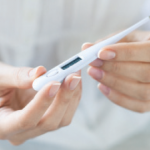In 1998, under yet another reorganization plan by Dow Corning to emerge from bankruptcy, women who wanted to cash out immediately and not file a disease claim were promised $2,000. For those who had previously filed a disease claim, between $10,000 and $250,000 was to be awarded, a far cry from the millions promised in the original settlement.
From time to time, I would see women who had signed up for the settlement but needed a local rheumatologist to manage their symptoms. And I gradually began to better understand the powerful psychodynamics that prevented them from recovering.
Over time, they became patients as opposed to litigants. Several improved—to some degree—by having the silicone breast implants removed; others did not. I neither encouraged them to take, nor discouraged them from taking, this step; I just couldn’t predict if it would help.
Medication trials were largely ineffective; muscle relaxants helped to some degree with insomnia and muscle tension, and many patients were prescribed combinations of anti-anxiety and anti-depression meds by their primary care providers, again, with mixed results.
For the most part, my subset of silicone breast implant sufferers remained unwell. Diffuse pain and stiffness and depression were their constant companions.
My Understanding
One woman in particular, who I followed for the better part of four years, helped me understand the mystery of why silicone breast implant sufferers were more functionally impaired than my worst rheumatoid patients. The answer, I believe, goes to the heart and mind of who the breast implant patients were before they underwent breast augmentation.
Milly T. just wanted to feel better. She’d been evaluated by two previous rheumatologists, and both agreed that she didn’t have a connective tissue disorder. Instead, they diagnosed her with fibromyalgia syndrome, a diffuse pain syndrome associated with non-restorative, fragmented sleep, often accompanied by depression and anxiety. And for the most part she accepted the diagnosis. But near the conclusion of our initial visit, I noticed in her patient questionnaire that her mother had died at age 34 and asked her what happened.
“Murdered,” she said simply.
“And you were how old? 12?”
“Yes.”
“And your sisters?”
“7, 10, l4.”
“Well, I’m sorry. Do you want to tell me what happened?”
“No. … Well, she was killed at home. It was a robbery, and he … he …well, he shot her in front of us.”
I closed my eyes, the image of that awful blistering moment filling my mind.
